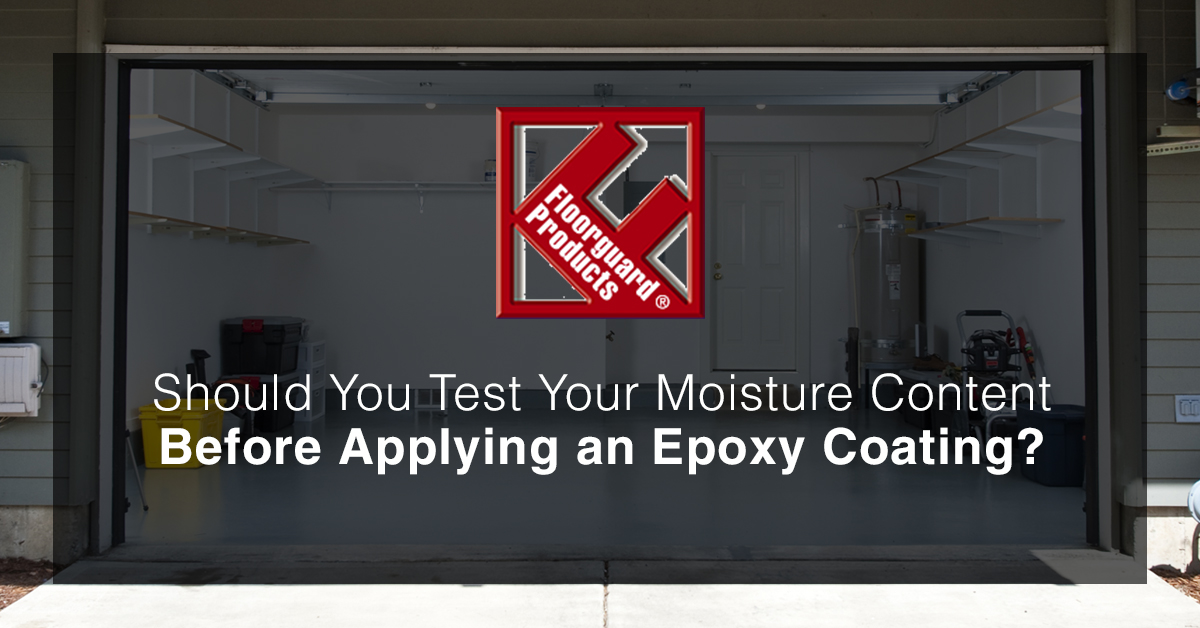Should You Test Your Moisture Content Before Applying an Epoxy Coating?
May 14th 2018

Concrete, while solid and hard, is very spongelike and absorbs a good amount of moisture both on the surface and from below. The amount of moisture your garage floor has varies throughout the year and is dependent on the season and the climate region you live in. If you live in the midwest or on the east coast, naturally, the moisture levels will be higher as a result of higher humidity climates. Moisture plays a role in the finished product of a garage floor sealant, but do you know how and why?
At Floorguard, we’ve been innovating and adding our expertise to the flooring industry for over 30 years, making us the industry leader in garage floor sealants. Follow along in today’s post and find out the impact of moisture when applying a garage floor sealant.
Do Moisture and Garage Floor Sealants Mix?
Garage floor sealants, especially epoxies, are hydrophobic and repel water, so to answer that question outright, no, moisture and garage floor sealants do not mix! One of the most common mistakes you can make when applying a new garage floor sealant is not checking the moisture level in the concrete. If your concrete is at all damp or wet, the epoxy won’t adhere and will essentially peel away, making your time and investment a lost cause.
How do I test my concrete moisture levels?
If it has rained or you have recently washed out your garage floor, you’ll need to wait a minimum of 24 hours to even test the levels. Testing the moisture levels of your concrete is a bit more involved than just reaching down and doing a touch test with your hand. Below are a couple of tests that come in handy when you have to test your levels.
- Plastic-Square Concrete Moisture Test - This test is a quick, low-cost way to test the moisture, but it may not be ideal if you’re trying to apply an epoxy coating. You’ll need a couple days to perform this test to get the best results. To conduct this test, cut around a 20 inch square of plastic or aluminum foil and tape it to different areas of the concrete floor you want to test. Check the squares everyday, and if there is moisture on the square, there is moisture in the concrete. If there is moisture on both the top and bottom of the square it means there is moisture in the air and on the ground. A little moisture is not the end of the word, as long as it can breath and air out, but if you apply an epoxy on a surface without proper ventilation, the moisture gets trapped and can cause the epoxy to bubble or peel.
- Calcium Chloride Concrete Moisture Test - This test can be performed by professionals or you can order a one online, and it gives you a better scope of what your true moisture levels are and a better indication to whether or not you should apply your epoxy coating. When you receive your test, follow the instructions on how you should prepare the concrete floor. The test is then placed on the floor for a couple of days, and then is mailed to the manufacturer who tests it and will give you results. The rule of thumb is, if you have more than three pounds of water vapor per 1,000 square feet, you should refrain from applying a garage sealant.
Testing your moisture levels is the first step in preparing your floors for a garage floor sealant, and it’s imperative for a beautiful and functional garage floor. If you live in a humid climate, it may be prudent to check with the manufacturer and to confirm a epoxy or urethane garage coating is the best option for your area.
To test for moisture, try either the plastic square method or the calcium chloride test. While the plastic square test is easy and cost effective, it may not give you the most scientific results. For more conclusive results, the calcium chloride test is the more fitting option.


